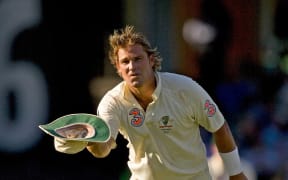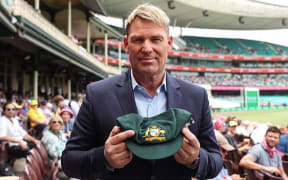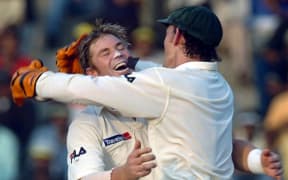By Russell Jackson for the ABC
Warnie. Just Warnie. It is customary at a time so sombre, serious and upsetting to put it more formally: Shane Keith Warne, Australian cricket hero, is dead at 52.
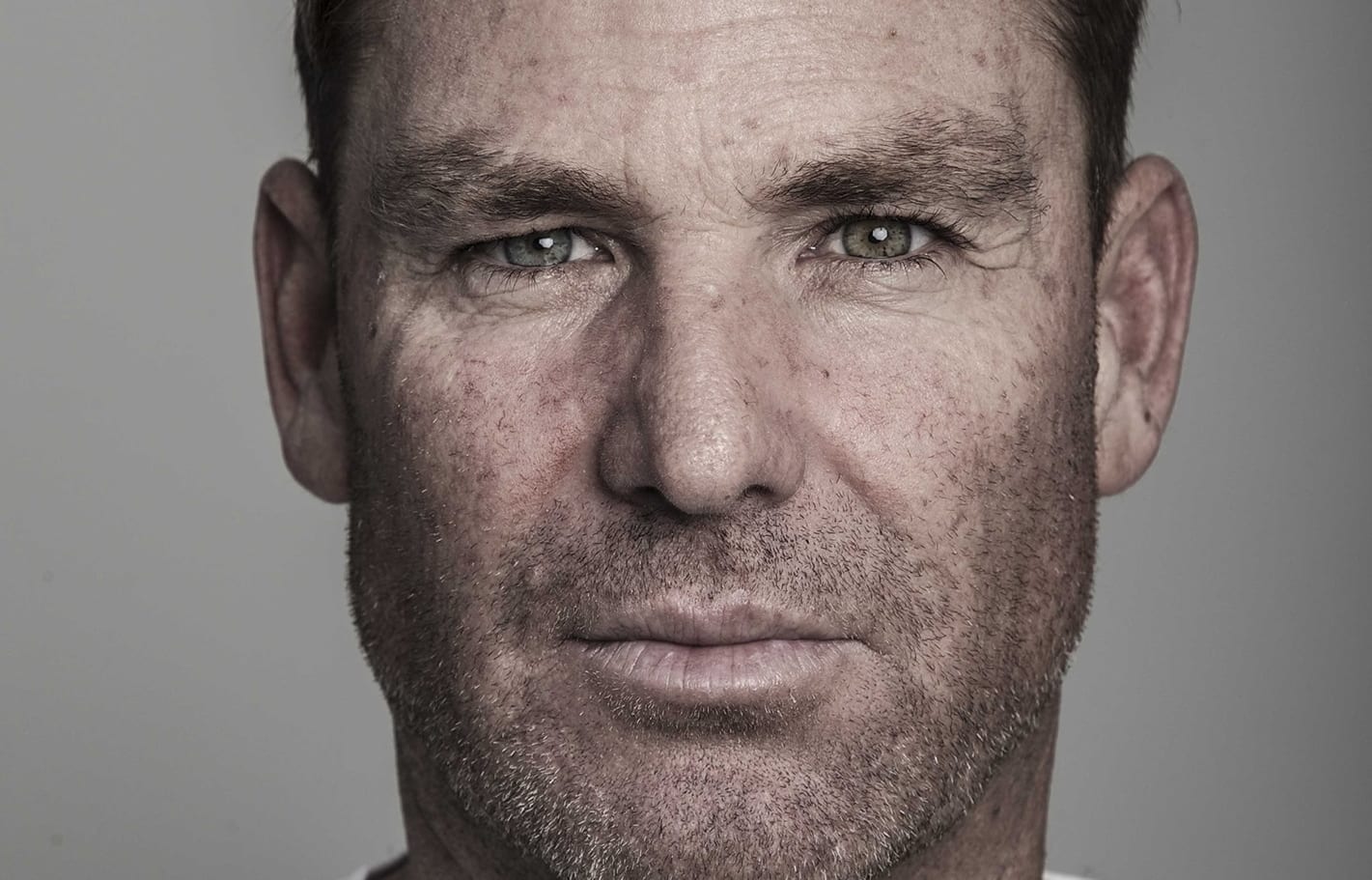
Shane Warne Photo: Julian Kingma
But right now, as fans reel from the news, it is impossible to avoid conjuring images of Warne that are not sombre and serious at all. How could a "Warnie" moment ever be sombre and serious?
He's windmilling his bowling arm after taking a wicket. He's dancing on the balcony with a stump over his head. He's sending that perfect leg-break past a flummoxed Mike Gatting - the ball of that century, and probably all others - launching himself from the status of budding star to immortal in one flick of the wrist.
He's lifting David Boon into the air at the MCG, celebrating a hat-trick in front of his home crowd, as Tony Greig loses his mind with delight. He's sitting sheepishly in front of a sponsor's backdrop issuing an apology - so many apologies, so many sins forgiven in the name of a talent nobody else possessed.
He's standing with Michael Jordan or Michael Hutchence, finally in the company of someone who understands what it's like to be so famous and adored but also torn down and disgraced, transcending the thing they do and becoming something else entirely - something beyond their control.
He's cavorting - was Warnie the last great cavorter? - around a hotel room in grainy black and white, embroiling himself in scandal. He's on 99 against New Zealand, skying one into the deep, the captivation of those present extending to the umpire, who misses the no-ball that he should have called.
He's sitting in a commentary box telling the story about the shot above - not the shot, so much, but the no-ball, because he's spent his entire life cultivating a larrikin image but moments like this still grate 20, 30 years on, and in his mind he's still there, on the field, the star of all stars, but also an incorrigible little boy who doesn't want to stop batting and never wants to grow up.
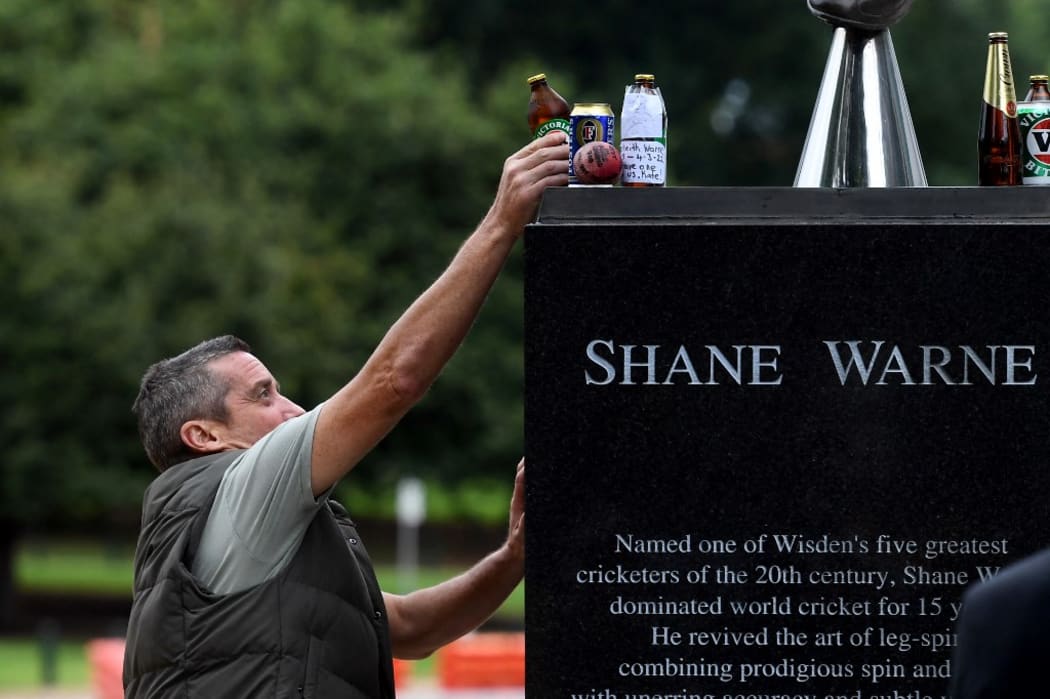
A man places a can of beer at the base of a statue of former Australian cricketing great Shane Warne at the Melbourne Cricket Ground, in Melbourne on March 5, 2022. Photo: AFP or licensors
He's doubled over laughing, talking about pizza or Happy Days or Rod Stewart - anything other than the game itself, and you kinda want to throttle him, but then you think about moments like the one that comes next.
He's leaning over the balcony at Lord's, the pride of a nation, hooting and hollering, the 1999 World Cup trophy wrapped up in a bear hug, and you know that Australia probably wouldn't have won it without the man who put it all on the line, attacking every cricket contest the same way he attacked life.
And now you struggle to process that he's gone - too soon, in a foreign land, in circumstances that shock you. But perhaps it was bound to happen in a way that would shock you. Perhaps it had to happen before you were ready, before you could wrap your head around what it would be like to lose a man who spent his entire public life shocking you.
So, Warnie will do. Just Warnie.
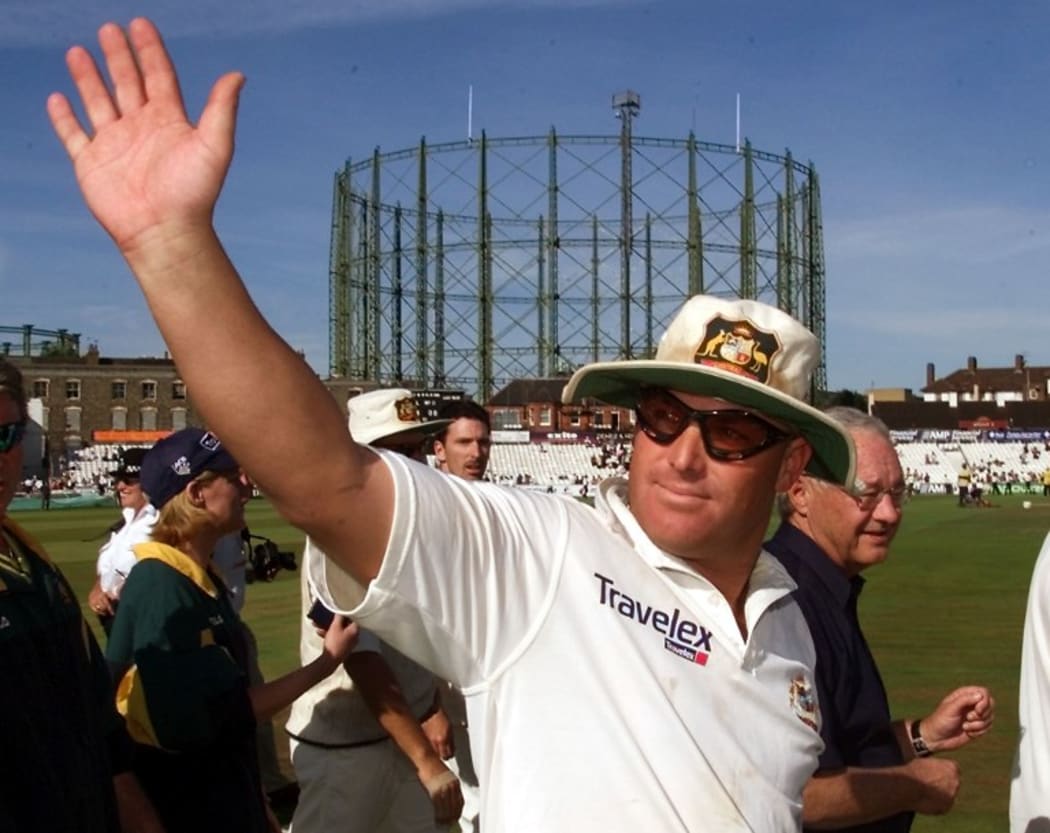
Shane Warne waves to the crowds after Australia defeated England on the final day of the fifth Test Match at the Oval August 2001. Photo: AFP / FILE
The makings of a champion
Shane Keith Warne was born on September 13, 1969, in Upper Ferntree Gully, but the Melbourne bayside suburbs of Hampton, Black Rock and Brighton were those Warne considered his home. He was the first son of Brigitte and Keith and an older brother to Jason.
Warne came from no notable cricketing stock. His German-born mother was not steeped in the game. His father only took it up in his 40s, to spend time with his boys at East Sandringham Boys Cricket Club.
In the decades following, armchair psychoanalysts would look to Warne's childhood for explanations of the outrageous character that shambled his way across the front pages of tabloids. Most found a happy-go-lucky beach bum from a household filled with love, support and forgiveness.
Perhaps, though, we find in his early biography the ingredients of his Peter Pan routine of the past decade - all that talk of World Series Cricket, mixed lollies and bygone TV characters. Was he simply frozen in the carefree idyll his indulgent parents had nurtured him in? There are worse places to be.
There were three other things that shaped the youthful Warne. The first was that his teenage stomping ground offered a thriving social scene. The second was a sporting scholarship to Mentone Grammar, where Warne's talents at Australian Rules Football and cricket would take precedence over academics.
The third - something that Warne applied increasing significance to as his career progressed - was an accident of his early youth that broke both legs, leading to a year in a cart that required Warne to push himself around. He became convinced the upper body strength he developed in those times went some way towards the magic he later produced with a cricket ball in hand.
Yet he was not a natural leg-spinner. Adopting Dennis Lillee as his spirit animal, Warne initially bowled fast and hit hard. One might conclude that the swagger and in-your-face aggression of the fast bowler remained with Warne throughout his career, making him that rare spinner who could intimidate a batsman out of his wicket.
For some reason - and Warne himself could never figure out why - he stuck with the leggies, but a football career was his truer aim. His idols were bayside luminaries Trevor Barker and Dermott Brereton, peroxide-blond superstars who'd fly over packs for eye-catching marks and dominate the nightclub circuit afterwards.
In the late 1980s, Warne was brought into the fold at Barker's club St Kilda, kicking a promising volume of goals in the Under-19s. Promoted to the Reserves, matched against men, he came unstuck. Club honchos thought he was too fat and slow. The club cut him loose and the disappointment stung.
Till his last days, Warne admitted he would rather have been a premiership-winning centre half-forward than a spin wizard. But it turned out that the chunky legs and broad chest that weighed him down on a football field were well suited to the short bursts of strength and velocity required of a good spinner.
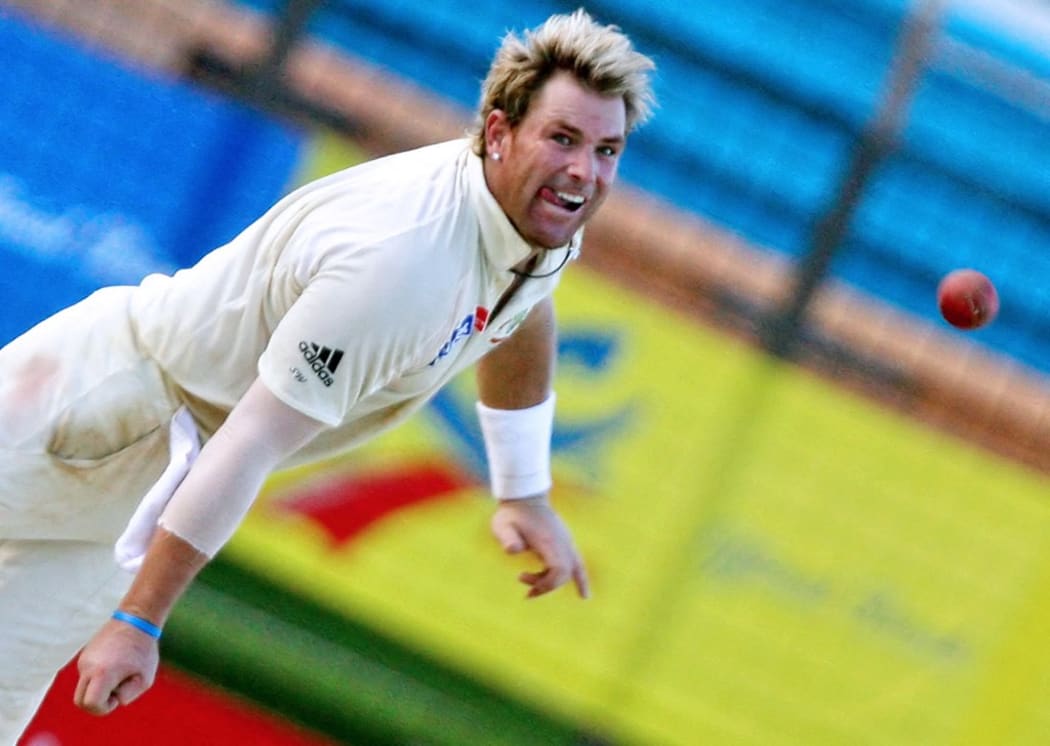
In this file photograph taken on April 19, 2006, Australian cricketer Shane Warne delivers a ball during the fourth day of the second Test match between Bangladesh and Australia at The Chittagong Divisional Stadium in Chittagong. Photo: AFP or licensors
The rise to the top
Still, even the captaincy of Mentone's first XI and his early forays into Melbourne district cricket did not suggest a superstar. Nor did his arrival home from a cricketing gap year in England's Lancashire League, on which he piled on so much weight that his parents barely recognised him at airport pick-up time.
Warne was 20 when he debuted in the first XI at St Kilda Cricket Club, then and now a feared stalwart of the Victorian district cricket competition and a breeding ground for many Test players. For Warne, the wickets wouldn't come. But there was a necessary slice of luck. Former Test spinner Jim Higgs spotted Warne wheeling away in the nets in 1989 and recommended him to Jack Potter, inaugural coach of the nascent AIS Cricket Academy.
In April 1990, Warne arrived in typical style: academy colleagues Justin Langer and Damien Martyn spotted him taking down a family-sized pizza and a can of VB. Warne's eventual expulsion seems inevitable in hindsight. He would always chafe at the system. But Potter had time enough to teach him his lethal flipper - a key addition to the bag of tricks that eventually shook the cricket world.
More importantly, it was the period in which Warne hooked up with Terry Jenner, a former Test leg-spinner who'd fallen on hard times, serving 18 months in jail for embezzlement. It didn't bother Warne, who sensed a kindred spirit. Jenner became his spin whisperer, and their fortunes rose in tandem.
In the 1990-91 Sheffield Shield season, Warne was nothing grander than a speculative selection for Victoria. He took only one wicket on debut, but in barren times for local spinners, he showed enough trickery to be selected for an 'Australia B' tour of Zimbabwe at season's end.
A seven-wicket haul on that tour and an impressive showing in a tour match against the West Indies the following summer foreshadowed his shock inclusion for the Sydney Test against India in January of 1992, with only seven first-class appearances behind him.
It was a story to which Warne would return repeatedly: the chubby, peroxide-mulleted nobody being belted around the SCG by Ravi Shastri; the unimposing debut figures of 1-150 from 45 overs. But he was on his way.
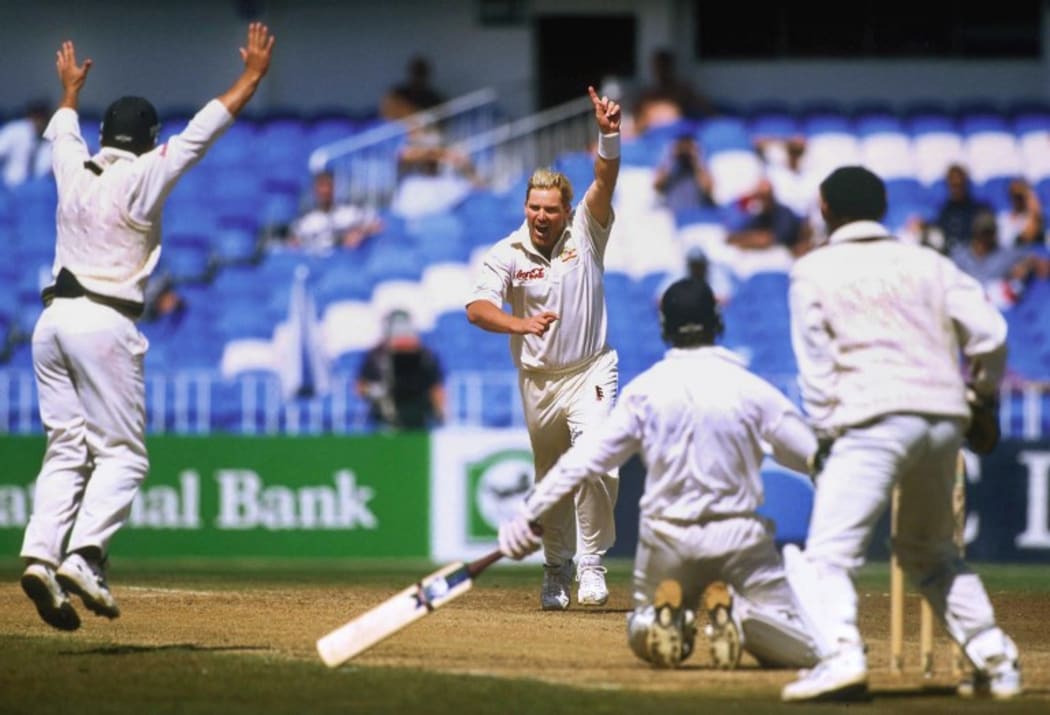
Shane Warne celebrates his test wicket-taking record of 355 on the last day of the first Test match between Australia and New Zealand at Eden Park 15 March 2000. Photo: AFP / FILE
'The Ball of the Century'
The Ashes tour of 1993 is rightly regarded as ground zero for the cult of Warne, but there were two previous performances that signalled Australia's spin project might come off.
The first came on a largely forgotten tour of Sri Lanka the year before, when Warne confronted the likelihood of being written off and tossed into obscurity. His 0-107 in the first innings of the Colombo Test suggested he wasn't up to it. But with the game slipping from Australia's grasp in the fourth innings, Allan Border threw the ball to Warne and his uncanny spell produced three wickets without a run. Australia snuck home by 16 runs.
Likewise, Warne's match-winning 7-52 against the West Indies at Melbourne the following summer virtually ended the international careers of his key rivals for the spin slot. He'd secured his place for the England trip and Border knew he had something special on his hands.
The funny thing about what followed was that England didn't even plan for it. Held back from the one-day international preliminaries, instructed by Border not to deploy his full arsenal in tour games, Warne was considered by England to be out of the selection frame for the first Test at Old Trafford.
Instead, he used his first delivery to baffle his opponent, tilt the momentum of the series irreversibly in favour of Australia, and cause a mini-revolution in the game.
"Gatting has absolutely no idea what has happened to it," said Richie Benaud, and - as the shocked batsman departed the scene shaking his head - "still doesn't know."
When that perfect leg-break fizzed past Gatting and took the bails, the dying art of leg-spin became the most captivating spectacle in the game. Or more accurately, Warne did. Perhaps, with time, and thanks to the many unpleasant distractions he created, we brushed aside the sporting magic show he gifted us for the 15 years following.
There was no sight in sport like the Shane Warne Show - the sense of anticipation as he removed his cap, adjusted his shirt sleeve and shaped to bowl, the change in the game's mood, the adjustment of the batsman's body language, the whirring of the ball as it arced through the air, the ridiculous angles of the spin he extracted on pitches around the world.
How it must have delighted Benaud, a past master of the craft. His commentary of Warne's most famous moment held true thereafter: batsmen simply didn't know what had happened to them.

Australian cricket legend Shane Warne in Christchurch for Cup Day 2014. Photo: RNZ
The many cricket lives of Shane Warne
The statistics don't go close to telling the story of the career, but they remain compelling: 708 Test wickets at 25.71, 293 at the same cost in one-day internationals and a similar average in first-class, List A and T20 ranks. Wherever Warne went, he took wickets. When a game was on the line, he was the man his captain looked to.
His fame, bridging the pre- and post-internet eras, is now hard to contextualise, but nary a month passed when he didn't make for front-page stories. Nike swooped with an endorsement deal, confirming Warne's international celebrity. The TV cameras loved him. He was a journalist's dream, forever doing something noteworthy.
In time, Warne was the subject of documentaries, a musical and a dozen books - at least four of them his own, though he variously claimed never to have read a book or to have read only one, about UFOs.
The fame might have been distracting, but the one consistent aspect of Warne's celebrity package was his performances in Australian colours. His playing career can be split into four phases.
The first took place between 1993 and 1998, when he burst onto the scene, took all before him and claimed his first 300 Test wickets - the second Australian to do so after his hero Lillee. It was the time of effortlessly wrecking English fortunes, toying with Daryll Cullinan and making even the world's best batsmen look foolish.
The main problem in that phase was physical - so often was Warne called upon to save Australia's day, putting extraordinary strains on his body, he began suffering the host of painful injuries that would eventually threaten his career.
The second phase might be sub-titled "scandal and disgrace". Between 1998, when Warne and Mark Waugh were embroiled in the "John the Bookie" affair, and 2004, when he returned from a one-year drug ban whose blame was sheeted home to Mum's diet pills, Warne was still a match-winner, but he could also be a one-man disaster zone.
In that period, infidelity cost Warne his marriage and injuries scrapped entire summers; the seeds of the drug ban, one might say, could be found in his desperate attempts to lose weight and heal the chronic shoulder injuries that robbed the sport of its greatest star and robbed Warne of the outlet for attention-hogging talent.
The third phase came when he returned from his drug ban in 2004. At 35, in elite cricket terms, he was on borrowed time. Remarkably, between then and his fairytale retirement after the 2006-07 Ashes, Warne took hundreds of wickets, moving past the 500, 600 then 700 Test wicket milestones. It redeemed him and fans soaked up one of the great late-career sprees.
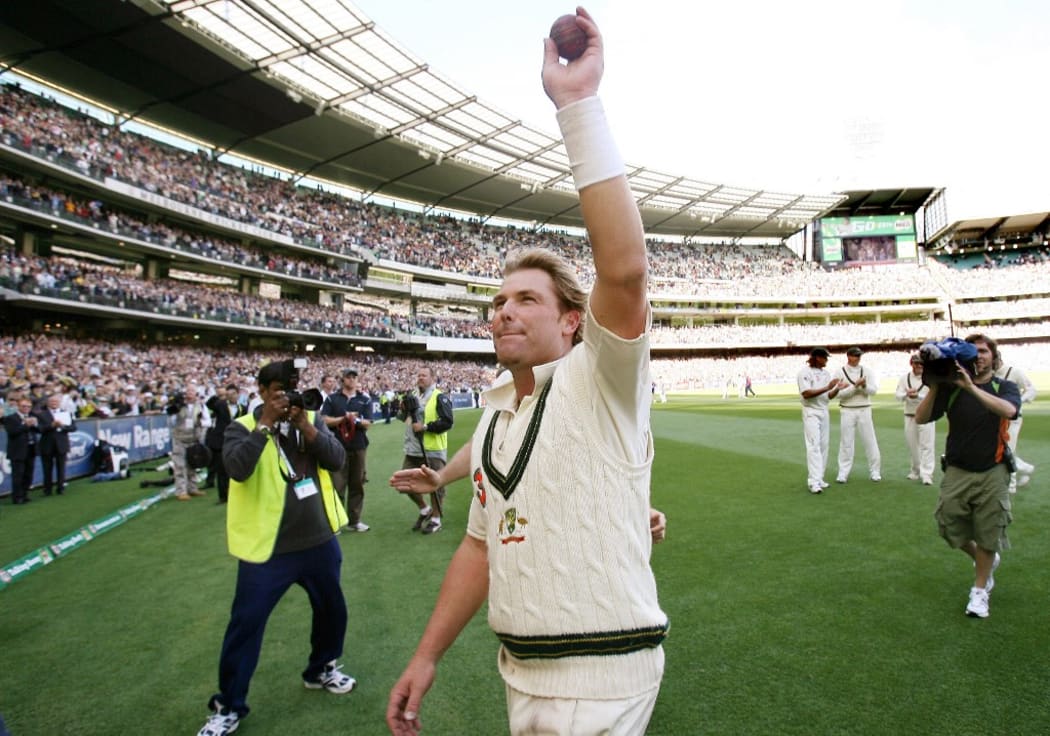
In this file photograph taken on December 28, 2006, Australian spinner Shane Warne waves to the crowd after playing his last Test Match on his home ground, the MCG, on the third day of the fourth cricket Test played in Melbourne. Photo: AFP or licensors
A shining example of that twilight brilliance came in the generation-defining 2005 Ashes, which were lost by Australia. Given his advancing age and the chaos of his private life at that point, Warne's 40 wickets at 19 remains an astonishing feat. Against England, he always rose to the occasion, but it was not a relationship of antagonism - he was a star there too, for Australia and Hampshire.
Warne often talked of his "script writer", a cliche to be sure, but also a measure of his wonderment that his life could so often veer away from disaster to glory. His final milestone was a case in point: his 700th wicket came five days after he announced his retirement, falling in front of his adoring home crowd in Melbourne. The atmosphere was overwhelming.
The final phase, between then and 2013, was Warne's globetrotting stint as a T20 specialist, for the Rajasthan Royals of the IPL and the Melbourne Stars in the Big Bash. If nothing else, it meant his career had spanned three decades, allowing another generation to say they'd seen a little of Warne's magic in the flesh.
For all of this, numerous honours flowed: he was one of Wisden's five cricketers of the century; he was entered into the ICC Hall of Fame. On honour boards around the cricket world, his name appears in gold leaf. But just as Warne was never one for stuffy traditions - in aid of charity, he sold his baggy green cap - his appeal to fans transcended statistics and trophies.
He was loved instead for the drama and flair he brought to everything he did - the showmanship, the moments of sublime inspiration, his knockabout ideals and his sheer outrageousness that endeared him to millions. Australian cricket will always have its superstars, but there might never be another as starry as Warne.
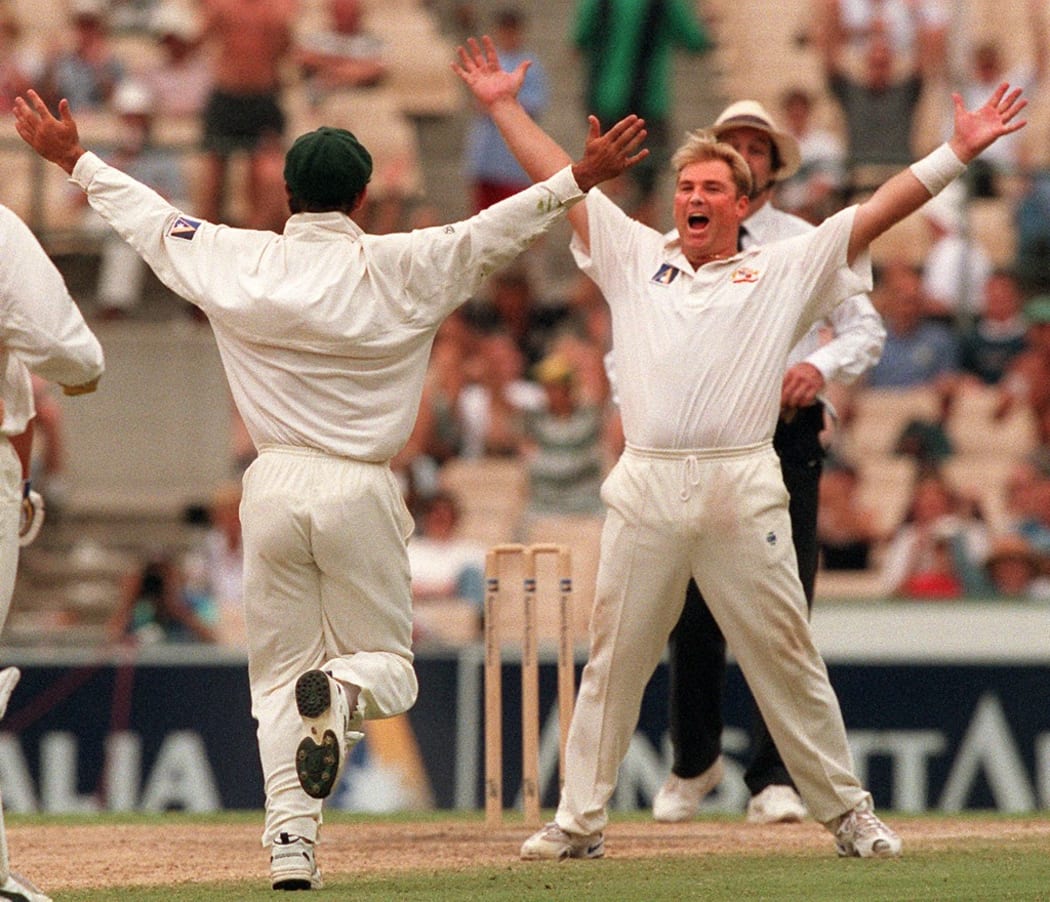
Australian spin bowler Shane Warne (R) raises his arms after claiming the wicket of a South African batsman on the way to his 300th wicket in Test cricket as Australia win the second Test Match in Sydney 05 January, 1998. Photo: AFP
The man, the myth
The difficulty now is processing the many conflicting emotions engendered by Warne. Like few cricket champions before, he was adored for what he did on the field and lampooned for what he did, and said, off it. Public opinion of him turned most dramatically on the public persona he fashioned in his post-playing years - a hybrid of Hugh Hefner, Warwick Capper and Tony Greig.
As a commentator, Warne could be like a jackhammer, endlessly pursuing a narrow range of targets, refusing to budge from his positions. This was the bloody-mindedness that made him such an unflappable cricketer - "This is the way…", "Give me the ball…", "I'll show you…" Most informed fans would happily spend hours listening to him talk leg-spin. On most other topics, not so much.
But even there, you couldn't help but laugh at the eternal boy - the enthusiasm bordering on hyperactivity, the way he'd jump the gun with audacious predictions that didn't come off, his guileless tendency to tell embarrassing stories about himself, the Advanced Hair, the fake tan, his childish food fetishes, or the infamous Warnie mural.
At those times, he hinted at one persona the public couldn't fully appreciate: the daggy dad. Warne was many things, not all of them palatable, but his love for his children was obvious and endearing. Their lives seemed like his second childhood. Their loss of a doting father transcends anything felt today by cricket fans.
But cricket fans will shed many tears, make no doubt. For the game, the loss of Warne is like the sudden disappearance of a planet. It hits us with shocking prematurity. The highlight reel rolls through our minds, and we find ourselves forgiving him his quirks and excesses, maybe wishing there were a few more of them to play out.
Those are the moments we can now only imagine.
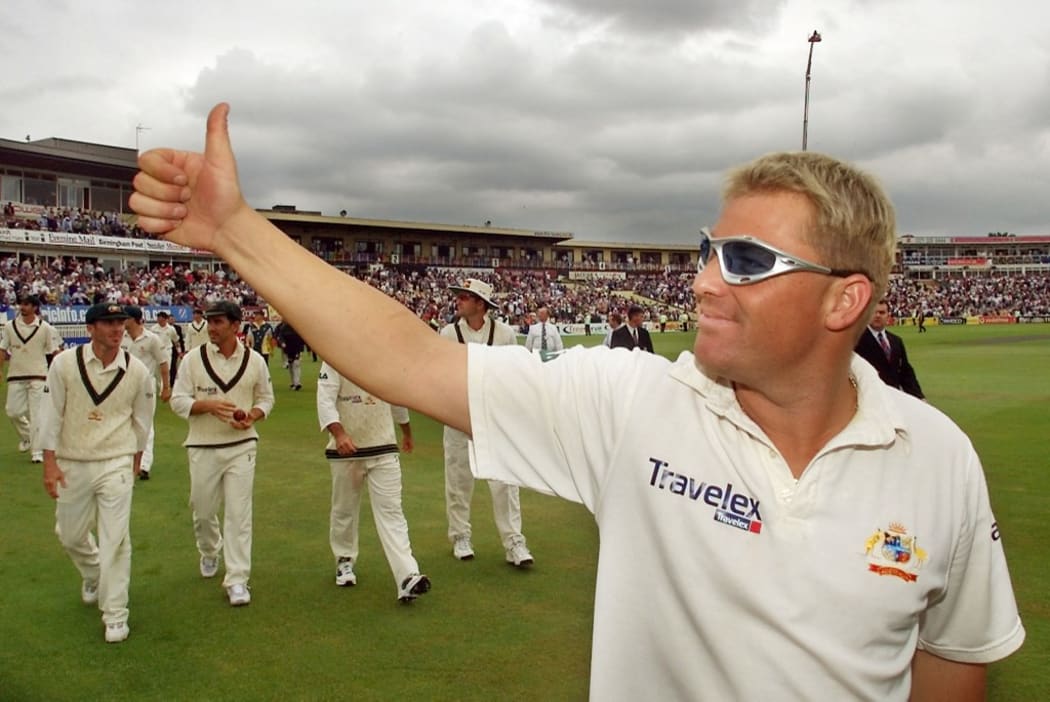
Australian spinner Shane Warne gives the thumbs up to the crowd as he and his teammates do a lap of honour after Australia defeated England in the first Ashes Test Match played at Edgbaston in Birmingham 08 July 2001. Photo: AFP
Maybe he's reluctantly gone grey, calling himself a "silver fox". He's wearing a Hefner-style bathrobe on some social media platform not yet invented - his grandkids got him onto it. He's doing adverts for a different kind of tablet, and you're laughing at him, sure, but you're still laughing, which is not the worst thing.
But even then, you're thinking of the past, too, remembering why you loved him in the first place. He's sending the ball on that iconic flight path - the one that is burnt into your mind, as familiar as a rainbow's arc. He's smiling devilishly, his lips covered in zinc. You know and he knows he's two steps ahead of the batsman, about to break through. He's bustling his way into that classic delivery stride that precedes so many other magical moments.
And you just know that he's going to take a wicket.
Because he's Warnie. Just Warnie.
- ABC
